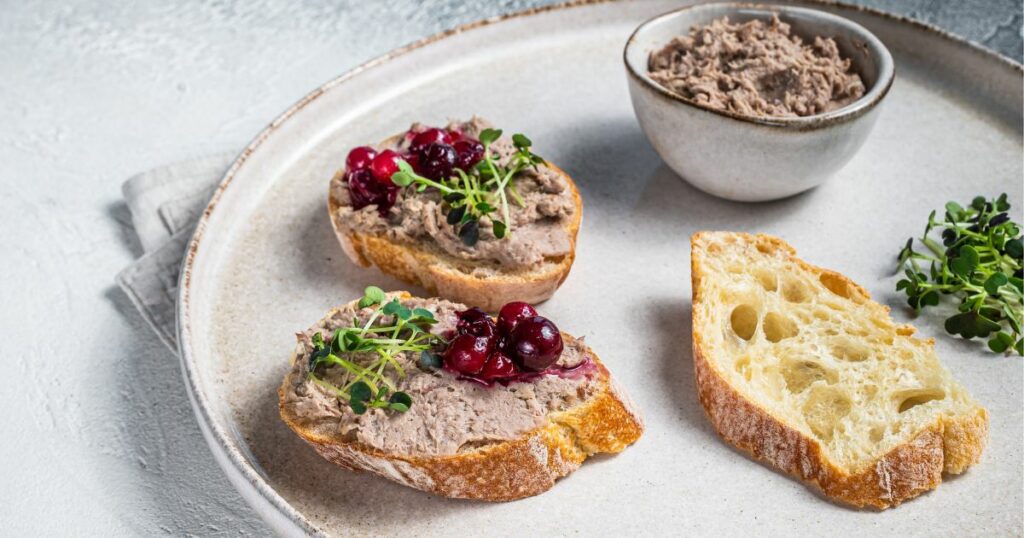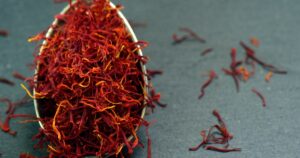Paté de Foie Gras
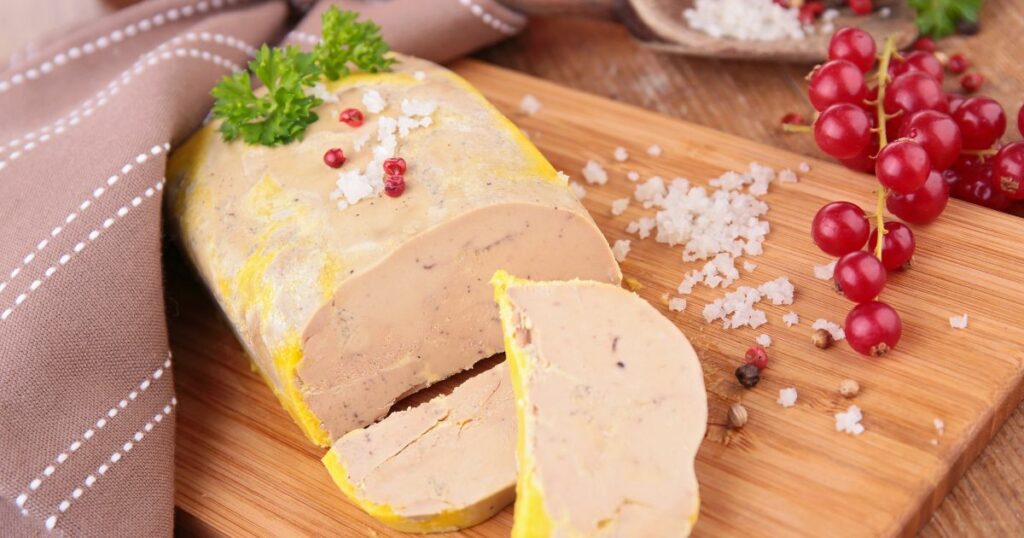
Paté de Foie Gras is the epitome of luxury in French cuisine. Made from the fattened liver of a duck or goose, this delicacy can be traced back to ancient Egypt, where it was first produced by force-feeding the birds to enlarge their livers. The technique was brought to France by the Romans and became a highly sought-after dish among the French nobility in the 18th century.
Today, Paté de Foie Gras is available at high-end restaurants, specialty food stores, and even some well-stocked supermarkets. It is often sold in jars or terrines, preserving its rich flavour and smooth texture.
Classic pairing: When it comes to pairing, Paté de Foie Gras is traditionally served with a glass of Sauternes, a sweet white wine from the Bordeaux region. The sweetness of the wine perfectly complements the rich, buttery flavour of the paté. It is also commonly served with toasted brioche or crusty bread, along with fig or onion jam to enhance the flavour.
Paté de Campagne
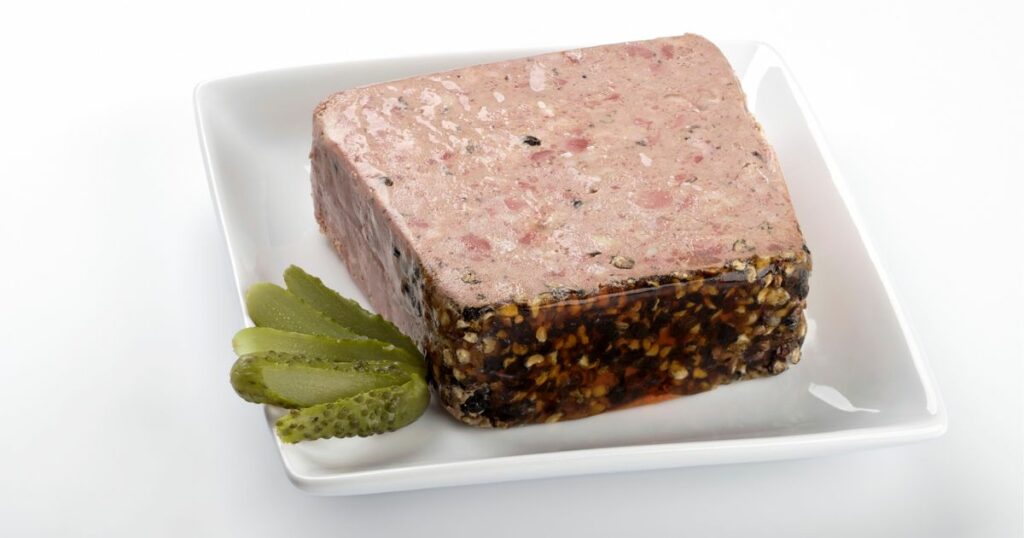
Paté de Campagne, also known as country paté, is a rustic dish originating from the rural regions of France. Made from a mixture of ground pork, liver, and other meats, this hearty paté is seasoned with a blend of herbs and spices, such as garlic, thyme, and black pepper. The ingredients are typically coarser than those found in other patés, giving it a more robust texture and flavour.
You can find Paté de Campagne at local markets, charcuteries, and even some bakeries throughout France. It is a popular choice for picnics, as it travels well and can be enjoyed at room temperature.
Classic pairing: A classic pairing for Paté de Campagne is a crusty baguette and a glass of red wine, such as a Cabernet Sauvignon or a Côtes du Rhône. The bold flavours of the paté are complemented by the wine’s tannins and acidity, while the bread adds a satisfying crunch. Pickles, cornichons, or a tangy mustard can also be served alongside the paté for a delightful contrast in flavour.
Rillettes
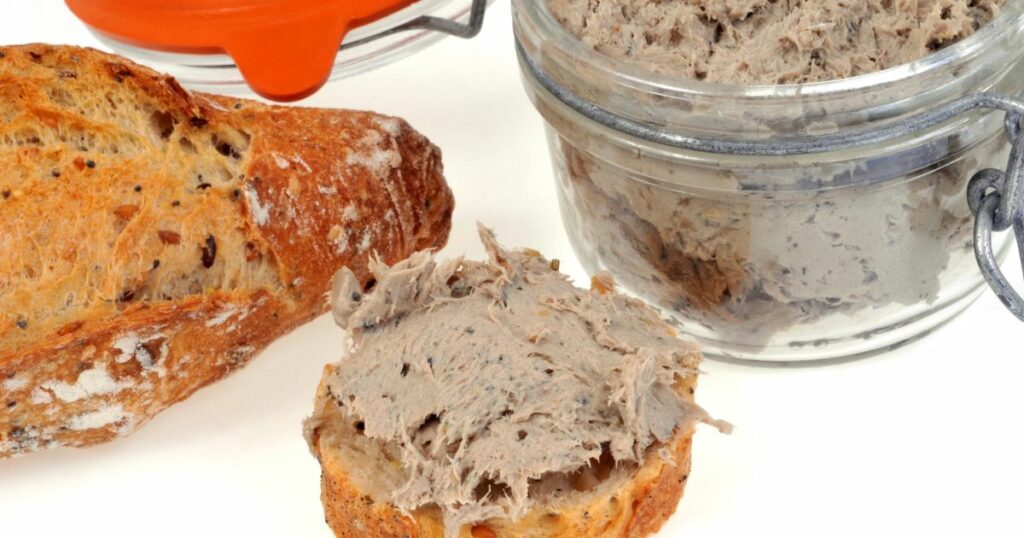
Rillettes, although not technically a paté, is a French spread made from slow-cooked meat, such as pork, duck, rabbit or even tuna fish or salmon that has been shredded and mixed with its own fat. The origins of rillettes can be traced back to the Loire Valley in western France, where it was traditionally prepared as a means of preserving meat in the absence of refrigeration.
Rillettes can be found at charcuteries, local markets, and some supermarkets throughout France. It is often sold in small jars, making it an excellent option for a quick and easy appetiser or snack
Classic pairing: When it comes to pairing, rillettes are best enjoyed with crusty bread, such as a baguette, and a glass of crisp white wine like a Loire Valley Muscadet or a Sauvignon Blanc. The wine’s acidity and brightness help to cut through the richness of the rillettes, while the bread provides a satisfying textural contrast. For an added touch, serve with cornichons or pickled vegetables to balance the flavours.
Paté en Croûte
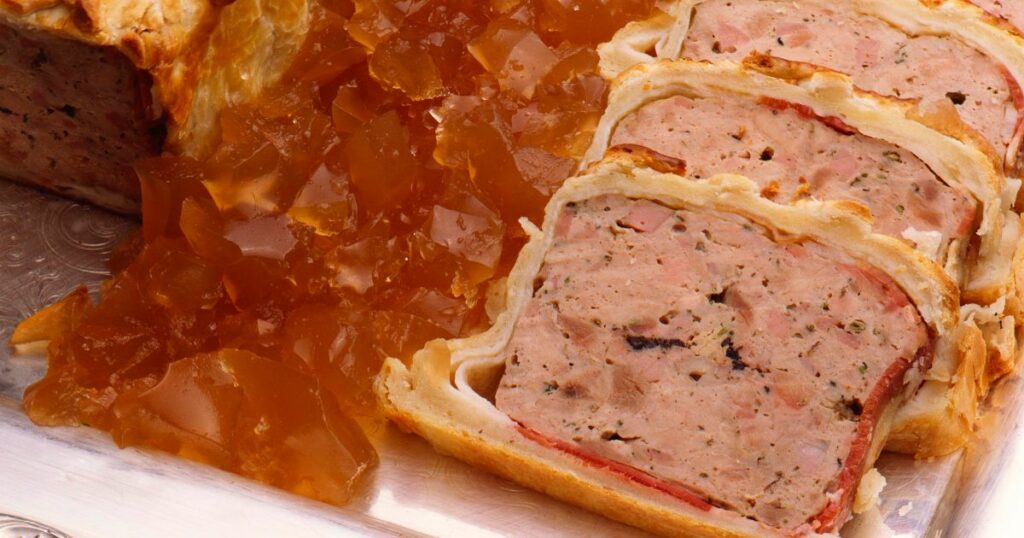
Paté en Croûte is a visually stunning and flavourful paté that hails from the region of Burgundy. It is made from a combination of ground meats, such as pork, veal, or game, and is encased in a golden, flaky pastry crust. This dish was historically served at banquets and special occasions, as the intricate designs on the pastry crust demonstrated the skill of the chef.
You can find Paté en Croûte at high-end charcuteries, specialty food stores, and some bakeries in France. It is often sold by the slice, making it a delightful addition to any charcuterie board or a centerpiece for a festive meal.
Classic pairing: Pair Paté en Croûte with a robust red wine, such as a Burgundy Pinot Noir or a Beaujolais, to complement the richness of the meat and the buttery pastry. Serve alongside a fresh salad, pickles, or a tangy chutney to create a well-balanced and satisfying meal.
Paté de Tête
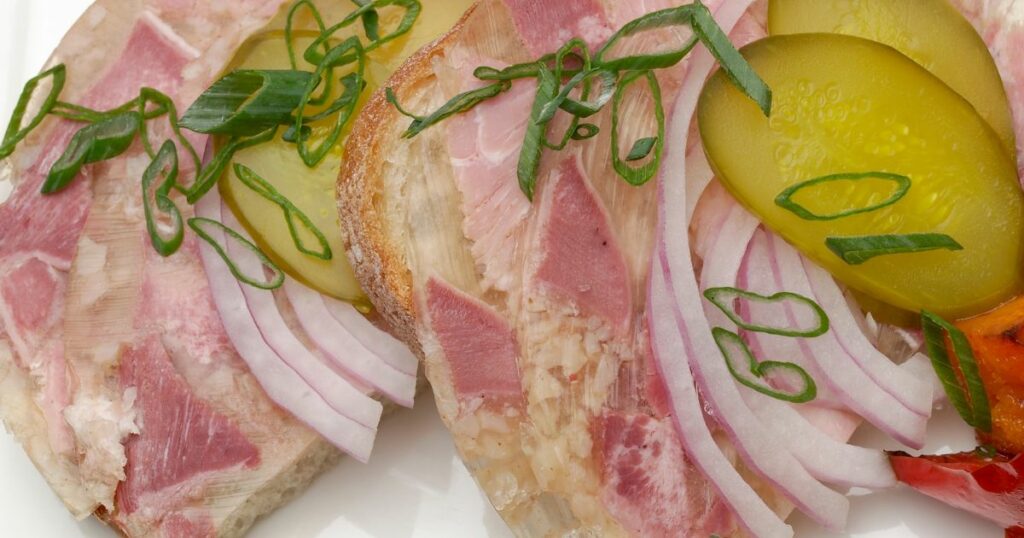
Paté de Tête, also known as head cheese, is a traditional French paté made from the meat of a pig’s head, which is boiled and then set in a gelatin made from the cooking liquid. This dish dates back to medieval times, when no part of the animal was wasted. Despite its name, there is no cheese involved in the preparation of this paté.
Paté de Tête can be found at local markets, charcuteries, and some butcher shops in France. It is often sold by the slice and is served chilled, making it a refreshing appetiser or light lunch option.
Classic pairing: To enjoy Paté de Tête, pair it with a crusty baguette and a glass of chilled white wine, such as an Alsatian Riesling or a Chardonnay. The acidity and brightness of the wine will help to balance the richness of the paté. Add a dollop of Dijon mustard or a spoonful of pickled onions for an extra burst of flavour.
Paté de Lapin
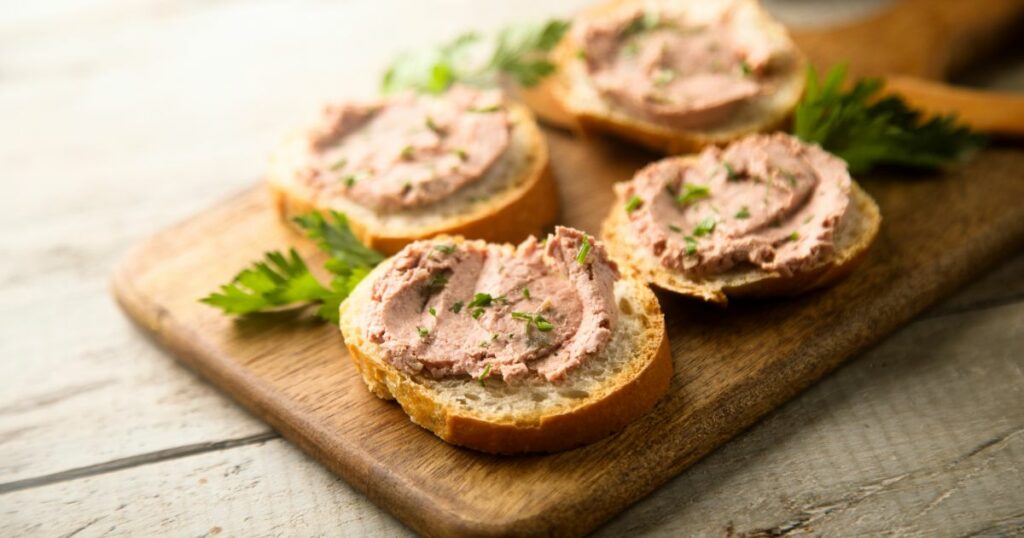
Paté de Lapin, or rabbit paté, is a delicate and refined paté made from the tender meat of rabbits. This dish can be traced back to the region of Provence in southern France, where rabbit has long been a staple ingredient in local cuisine.
Paté de Lapin can be found at specialty food stores, charcuteries, and local markets throughout France. It is often sold in small terrines or jars, making it a delicious and elegant appetiser or picnic treat.
Classic pairing: To enjoy Paté de Lapin, pair it with a crisp, light white wine like a Provencal Rosé or a Vermentino. Serve it with a crusty baguette or crackers, along with a selection of fresh, ripe fruit, such as figs or grapes, to complement the delicate flavours of the rabbit meat.
Paté de Canard
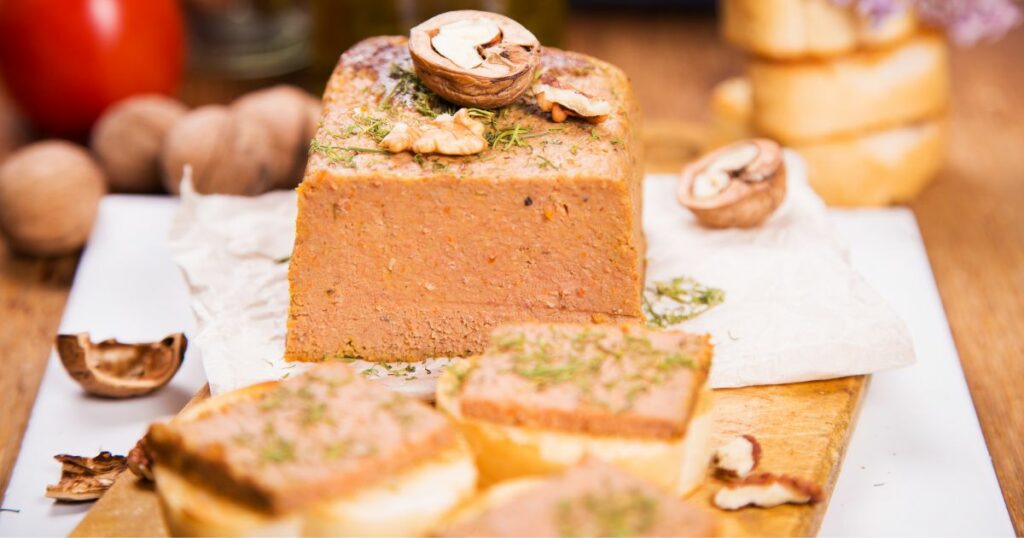
Paté de Canard is a sumptuous and flavourful paté made from duck meat, often combined with other ingredients, such as pistachios, mushrooms, or truffles. This dish is particularly popular in the southwestern region of France, where duck is a staple ingredient in many local dishes.
You can find Paté de Canard at charcuteries, specialty food stores, and local markets throughout France. It is typically sold in small terrines or jars, making it an ideal choice for a gourmet appetiser or snack.
Classic pairing: To enjoy Paté de Canard, pair it with a bold red wine, such as a Bordeaux or a Malbec, which will complement the richness of the duck meat. Serve it with crusty bread or crackers, and consider adding a dollop of fruit chutney or a spoonful of caramelised onions to enhance the flavours.
Paté de Poularde
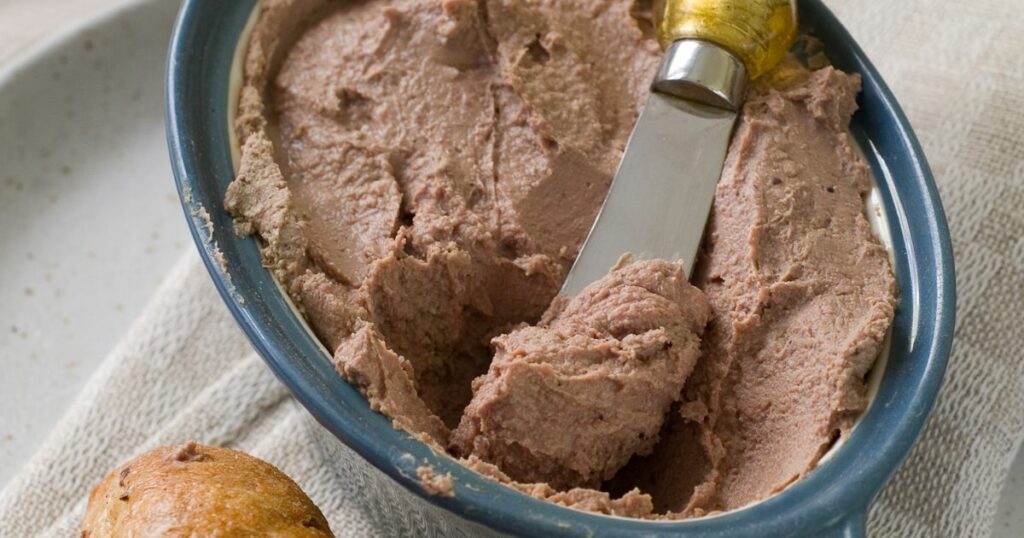
Paté de Poularde is a delicate and refined paté made from the meat of young, female chickens, known as poulardes. This dish is particularly popular in the region of Bresse, in eastern France, where the Bresse chicken is renowned for its superior flavour and quality.
Paté de Poularde can be found at specialty food stores, charcuteries, and local markets throughout France. It is often sold in elegant terrines or jars, making it a sophisticated choice for a dinner party appetiser or a special occasion treat.
Classic pairing: When enjoying Paté de Poularde, pair it with a light, crisp white wine like a Chardonnay or a Chenin Blanc to complement the delicate flavours of the chicken meat. Serve it with thinly sliced baguette or crackers, along with a selection of fresh vegetables or a light, tangy salad.
Paté de Sanglier
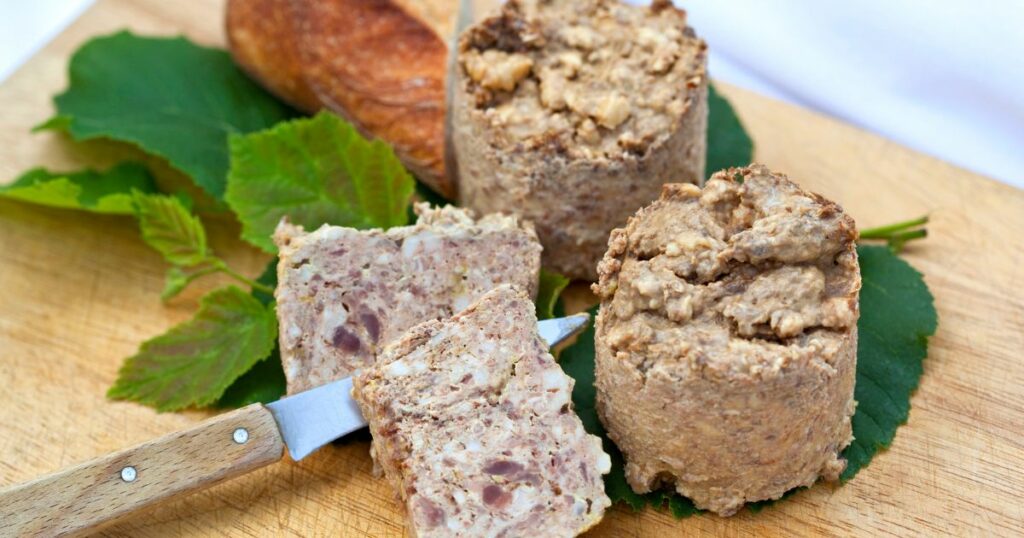
Paté de Sanglier, or wild boar paté, is a robust and hearty paté made from the meat of wild boars. This dish is particularly popular in the forested regions of France, where wild boar is a common game animal.
You can find Paté de Sanglier at specialty food stores, charcuteries, and local markets throughout France, particularly in areas where wild boar hunting is common. It is often sold in rustic terrines or jars, making it a delicious and unique addition to any charcuterie board.
Classic pairing: To enjoy Paté de Sanglier, pair it with a full-bodied red wine, such as a Rhône Valley Syrah or a Cahors, which will stand up to the bold flavours of the wild boar meat. Serve it with crusty bread or crackers, and consider adding a spoonful of grainy mustard or a few pickled vegetables for an extra burst of flavour.
Paté de Saumon
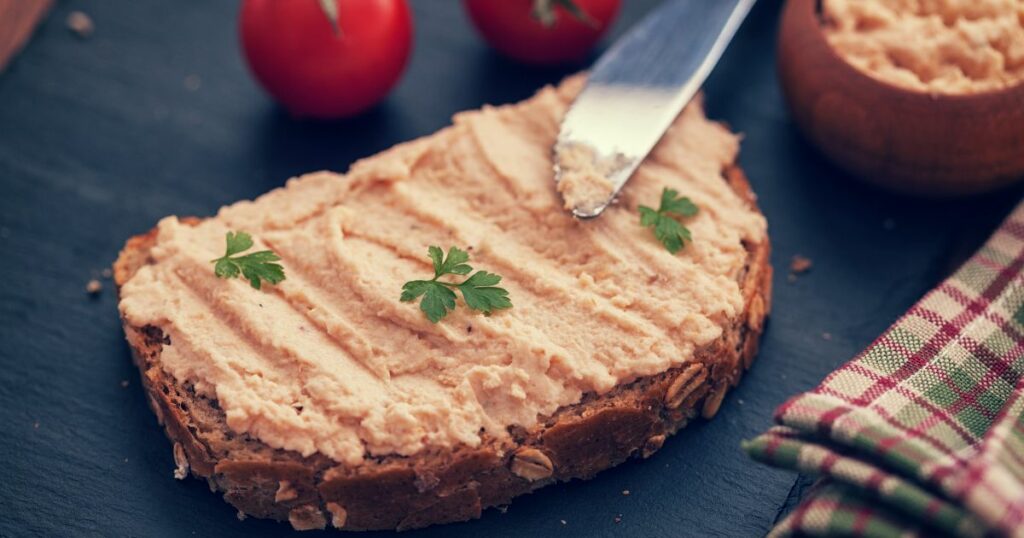
Paté de Saumon, or salmon paté, is a delicate and flavourful paté made from fresh salmon, often combined with cream cheese, herbs, and spices. This dish is particularly popular in coastal regions of France, where fresh seafood is readily available.
You can find Paté de Saumon at specialty food stores, fish markets, and local markets throughout France, particularly in coastal areas. It is often sold in small jars or terrines, making it a light and refreshing appetiser or snack.
Classic pairing: To enjoy Paté de Saumon, pair it with a crisp, refreshing white wine like a Sauvignon Blanc or a Picpoul de Pinet. Serve it with thinly sliced baguette, crackers, or cucumber rounds, along with a side of fresh lemon wedges or a spoonful of capers for added zest.
Conclusion
The rich and diverse world of French patés offers a delicious and satisfying journey through the culinary heritage of France. With flavours ranging from the delicate and refined to the robust and hearty, there is a paté for every palate. Whether enjoyed at a dinner party, a picnic, or simply as a snack, these exquisite dishes will transport you to the heart of French gastronomy.
𐡸 𐡸 𐡸 𐡸 𐫱 𐡷 𐡷 𐡷 𐡷
Frequently asked questions
While both paté and terrine are French culinary preparations made from ground or finely chopped meats, there are some differences between the two. A paté is typically smoother in texture and can be spreadable, whereas a terrine is a more coarse and rustic preparation, often served in slices. Additionally, a terrine is typically cooked and served in a rectangular dish called a terrine mold, while paté can be cooked and served in various forms, such as jars, loaves, or en croûte (in a pastry crust).
The shelf life of an opened French paté varies depending on the ingredients and the method of storage. Generally, it is recommended to consume an opened paté within 3 to 5 days if stored in the refrigerator. To prolong the shelf life, you can also freeze the paté, which can last for up to a few months. However, freezing may alter the texture and flavour of some patés.
Yes, there are many vegetarian and vegan paté options available, made from ingredients such as mushrooms, lentils, chickpeas, or nuts. These meat-free alternatives still offer rich and satisfying flavours, often seasoned with herbs and spices similar to traditional French patés.
As with any food, moderation is key when consuming patés. Some patés, such as foie gras, are high in fat and cholesterol, and should be enjoyed in moderation. Other patés, such as those made with lean meats or seafood, can be part of a balanced diet. Always consult a healthcare professional or a registered dietitian for personalised dietary advice.
